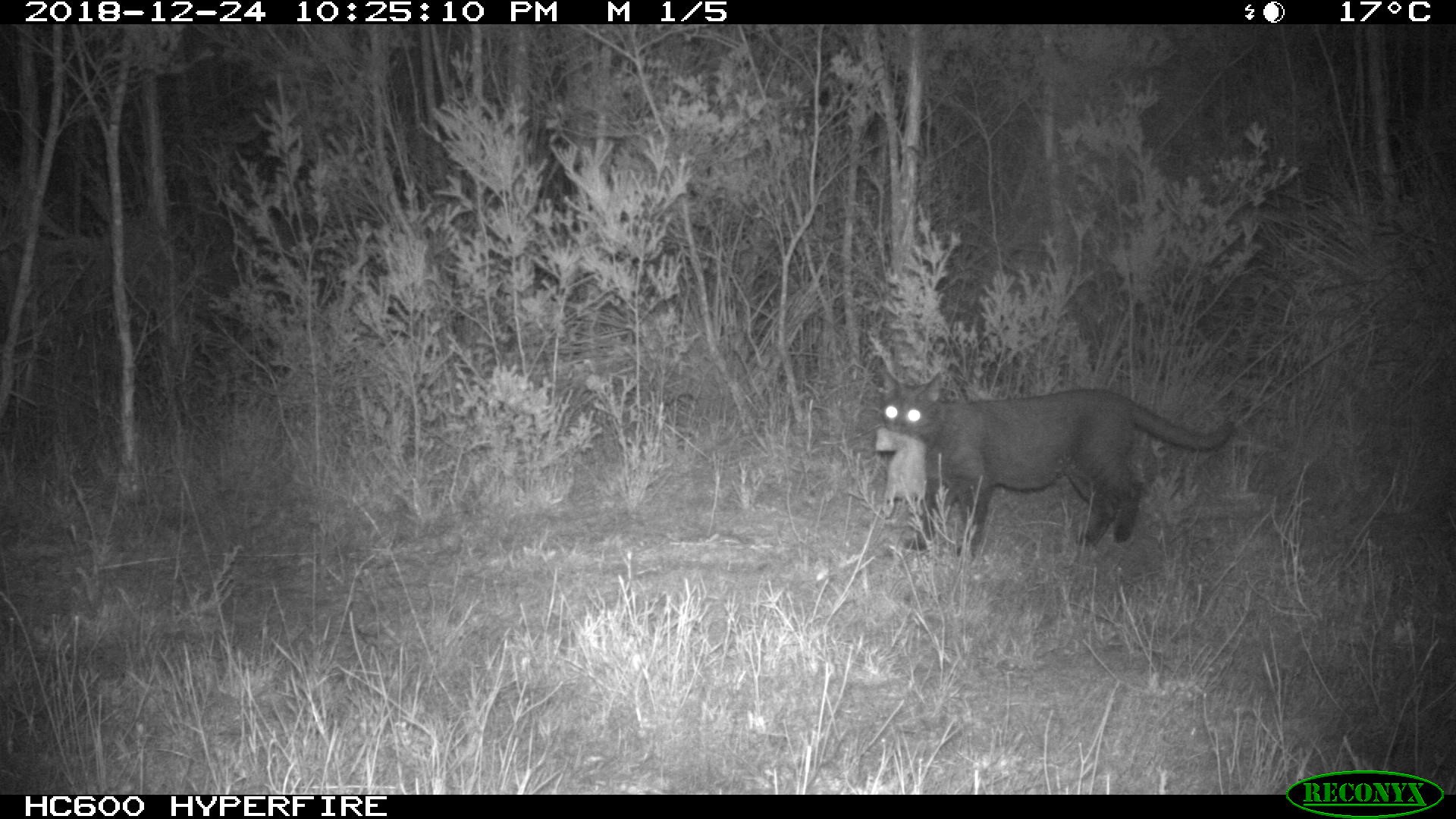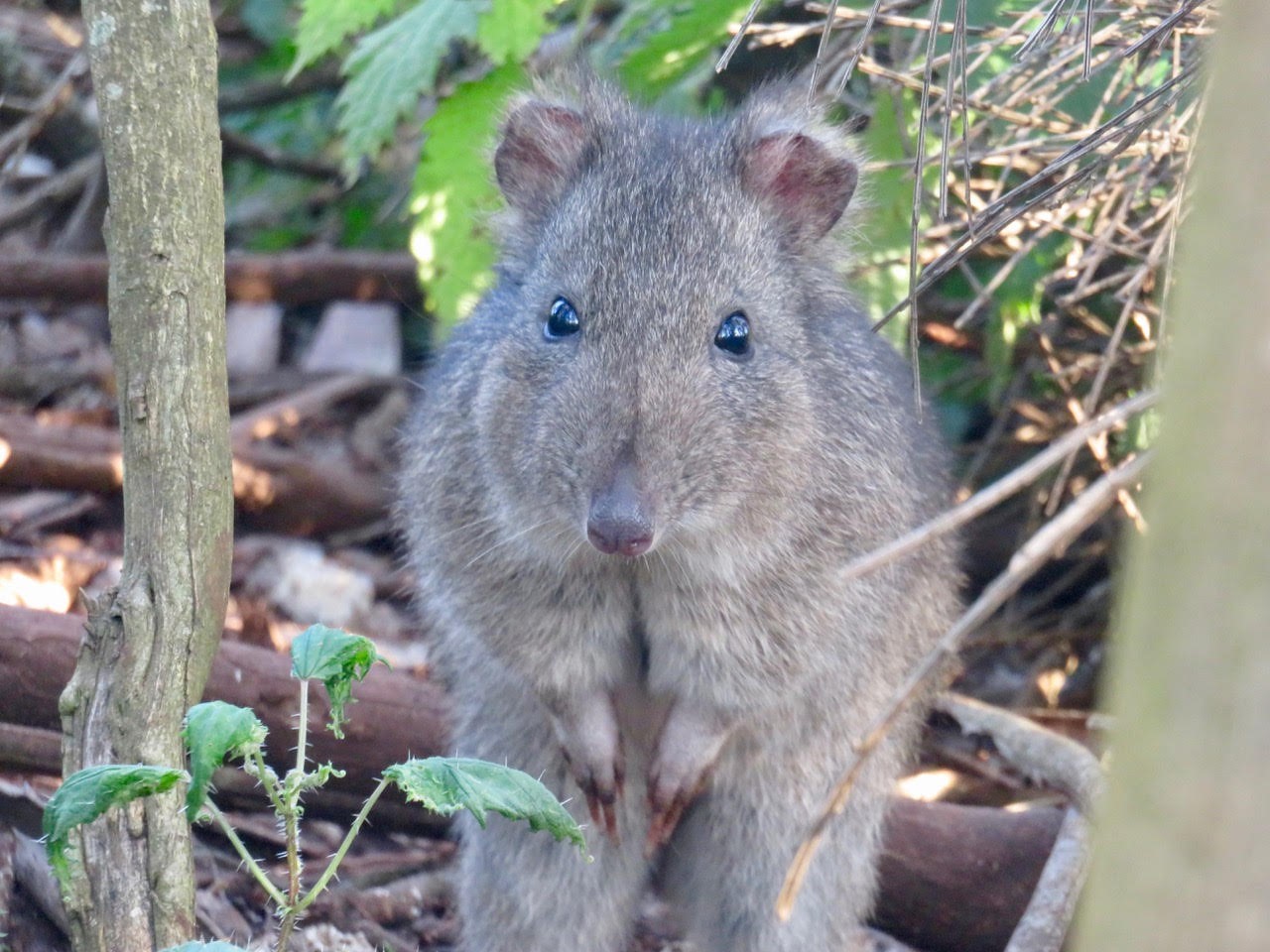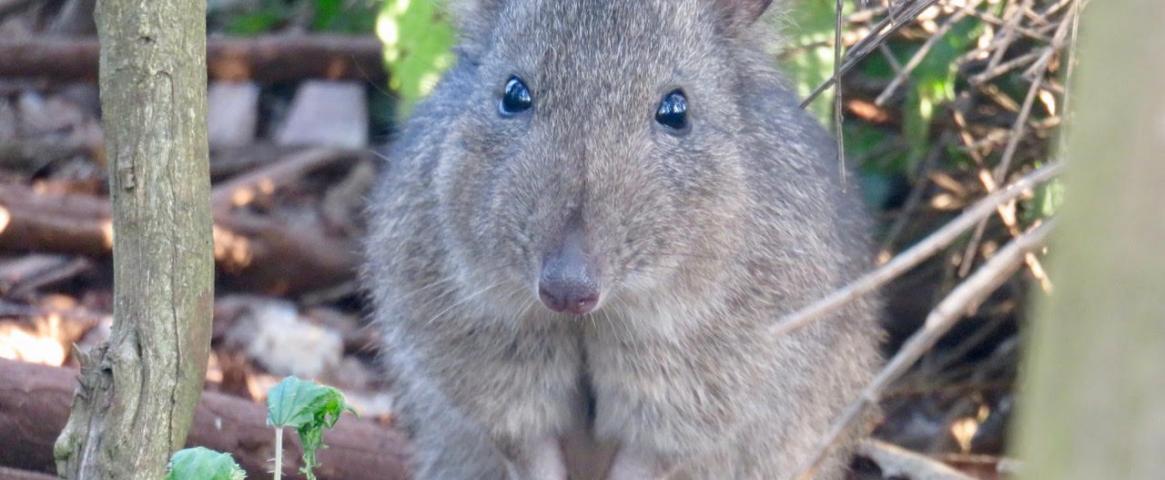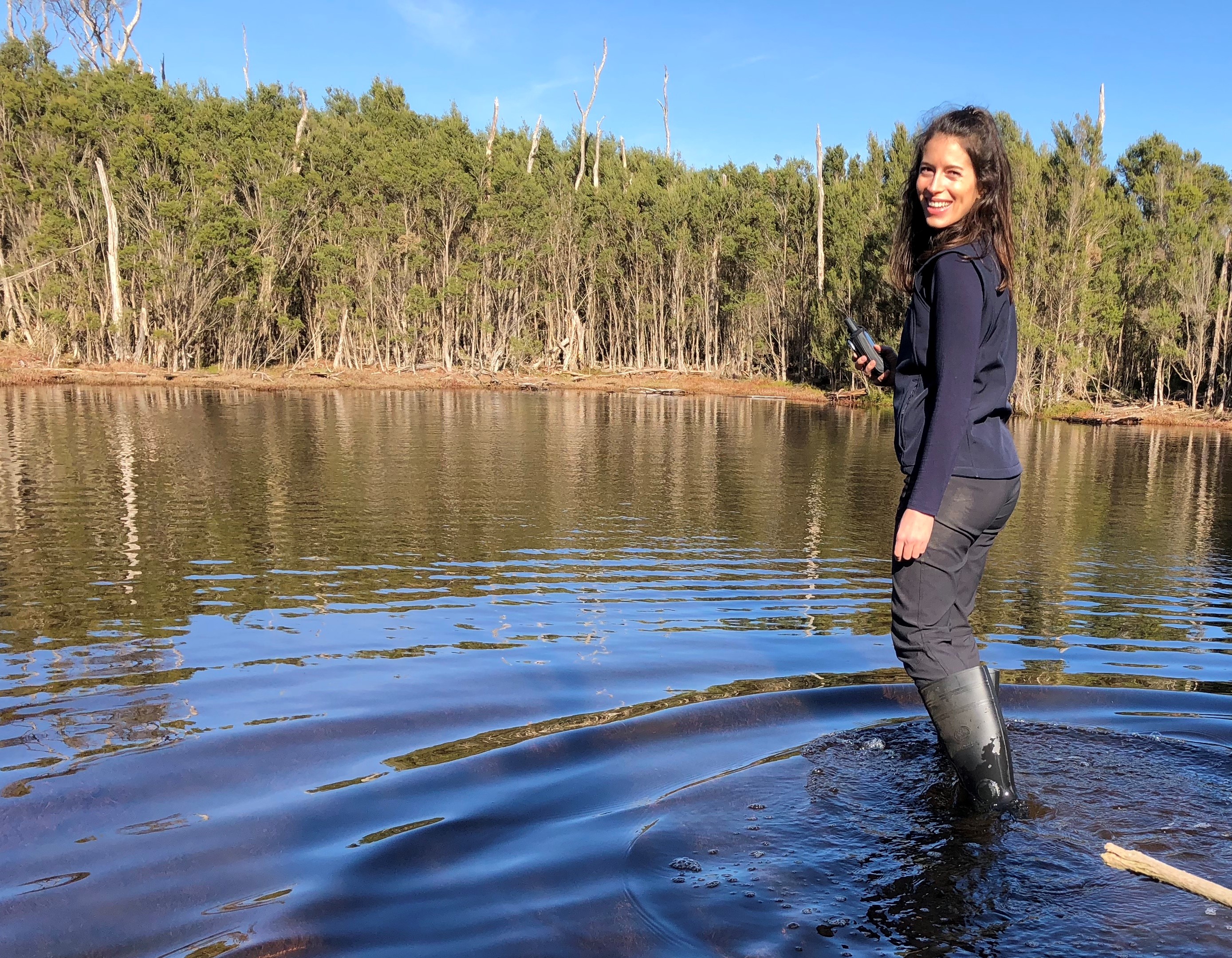By Jake Krauss
Cats and foxes have decimated native wildlife across Australia, but how have some marsupials managed to survive? New evidence suggests that some native species may be able to adapt to long-term predation pressure from cats.
A new study in Wildlife Research found that long-nosed potaroos (Potorous tridactylus tridactylus), an endangered marsupial, have adjusted their behaviors to the presence of feral cats. The marsupials spend more time in thicker vegetation cover and shift their daily schedules to avoid the predators.

According to lead author Vivianna Miritis, “This is the first time where an Australian native species has been documented to change their activity to avoid an introduced predator in the wild.”
Miritis spent two seasons hiking through the National Park area of French Island off the southeast coast of Australia. As a research assistant for Zoos Victoria her mission was to document the many cats living on the fox-free island. She placed remote sensing cameras to take pictures of animals for 99 consecutive days over the course of two seasons.
Initially the project was meant to study cats, but the late-night film gave the team something else to look at.
“We got so much long-nosed potaroo footage that we ended up [observing] how the two interact,” says Miritis, currently a PhD student at University of Sydney. Long nosed potaroos are known for their ecosystem role in foraging for fungi and dispersing spores essential for forest health.
She found that long-nosed potaroo activity increased late at night, as peak cat activity waned. This suggests the potaroos adjusted their behavior to reduce predation risk.
The research also found long nosed potaroos in denser vegetation, where they naturally take refuge. Unlike in past studies, these potaroos didn’t forage in open areas, which are more dangerous but offer better quality feeding opportunities. The potaroos adapted by trading foraging benefits for safety in the vegetation.
These results help us better understand how native species can be conserved in their natural habitats.
“If a species can persist long enough, they are able to adapt mechanisms to continue to survive alongside introduced predators,” Miritis explains.
While especially threatened on mainland Australia, the lack of foxes on French Island allows the potaroos to survive long enough to adapt to predation pressure from the cats.
Most conservation methods for protecting endangered species in Australia involve fencing them off in protected enclosures to keep them safe from predators. This can cause prey naïveté. This lack of predator wariness makes it difficult for the prey to survive in the long run. Another common method of conservation is culling, or killing off, large numbers of cats in areas of conservation concern.
These methods are less necessary with “predator savvy” populations.
“To be predator savvy, [marsupials] need to change their behavior to avoid detection, avoid being attacked, or killed from an attack,” says Katherine Moseby, Research Scientist at Arid Recovery.
Overall, coexistence is key to reinstate these animals over large areas because “we’re never going to eradicate cats from Australia,” Moseby says. Having a “predator savvy” source population on French Island may make for better candidates for reintroduction programs to the mainland.
“When you have good structural complexity and thick cover, potaroos can coexist with cats. You need to maintain high densities of understory in order to… reduce the encounter rates of predator and prey,” Moseby explains.

Instead of culling cats, habitat restoration may be more useful, as habitat loss is a larger threat to the future of long-nosed potaroos. According to Moseby, “habitat fragmentation, land clearing, overgrazing—all that stuff leads to poor habitat quality that makes it easier for cats and foxes to hunt.”
If cat eradication continues on French Island as planned, Miritis believes the potaroos may begin to forage in the more open habitat again. With fewer predators around, the potaroos might shift their behavior and explore the less dense vegetation to search for better quality food. While culling cats may benefit other native species, protecting understory can give room for native marsupials to adapt to pressures from predators.
When it comes to conservation of native Australian species, reintroducing predator savvy animals increases the chances of success. Even in cases where cat eradication isn’t possible, studying predator-prey interaction can highlight opportunities for coexistence. As Miritis optimistically remarks, “They are adapting; there is hope for native species in the presence of these feral predators.”
Jake Krauss is a master’s student pursuing an Erasmus Mundus joint degree in tropical ecology. He is a wildlife biologist and science communicator previously working for the Kino Bay Center in Sonora, Mexico. You can follow along with his conservation adventures at kraussingtheworld.wordpress.com or Instagram @Jake.krauss.
This story was produced as part of NASW's David Perlman Summer Mentoring Program, which was launched in 2020 by our Education Committee. Krauss was mentored by DJ McCauley.


